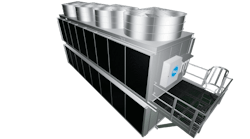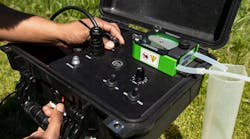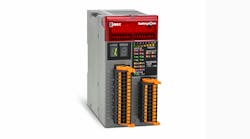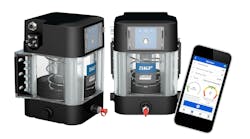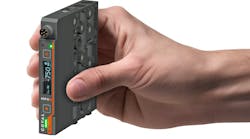With a rich history of company transition and growth, Enerpac has deep roots dating back well before the WWII era. Known then as the Blackhawk Tool Company, Enerpac-supplied devices and products that were used during and after the war. These remnants of the WWII era continue to be found across Europe to this day.
Florent Lugentz of Belgium found a Simplex Model 29 Mechanical Jack, manufactured in Chicago, IL, in the middle of a Belgian forest in the fall of 2016. The forest is close to where WWII battles took place, which means the jack had been sitting in the woods unnoticed for over 60 years.
The old model 29 after being cleaned up by Mr. Lugentz in Belgium.
The RJ2029 as it appears in the Simplex catalog today.
It turns out this jack is the “great-grandfather” to the Model RJ2029 Ratchet Jack, produced by Simplex and now a brand of Enerpac. It has an 18-in. stroke, 20-ton support capacity, and 15-ton lifting capacity. The Model 29 Jack transformed into RJ2029 over the years as the product line expanded. The Simplex Model 29 was used in Western Europe during WWII and after, for bridge repair, lifting and positioning operations.
Simplex developed this “no hydraulics” system at the turn of the 20th century, manufacturing these jacks for over 100 years. The product is still used today for work on railway track systems. In 2007, Simplex was acquired by Enerpac and continues to be a world leader in mechanical jack systems.
The A-258 Bench Press as it appears in the Enerpac catalog today.
As it turns out, an abundance of equipment and tools were abandoned across Europe after WWII. Much of this equipment has been recovered and preserved, and now displayed in museums.
The National War and Resistance Museum, located in Overloon, Netherlands, is the largest WWII museum in Europe. There are over 200 pieces of military vehicles and equipment displayed. One of the largest tank battles of WWII was The Battle of Overloon, which took place between September and October of 1944. The battle lasted nearly three weeks and resulted in the deaths of many soldiers. The Germans defended their occupation of this area by attacking the Allied Forces, but finally retreated and abandoned their equipment at the site. The city of Overloon built a museum around the discarded equipment and left most in battle condition to keep the memory of WWII alive.
Typical transport vehicle used to perform in-field maintenance on Allied Tanks during WWII. This is an MC2 1/2 ton 6×6.
In the room that displays the tank support vehicles used to perform field repairs, a Blackhawk Hydraulic Bench Press can be found. Manufactured by Blackhawk Hydraulic Tools, which eventually spun off a small industrial tool company called Enerpac, this bench press was used for tank maintenance operations requiring the application of high force, such as bending, straightening and pressing. These tools are still produced by Enerpac and used today, performing very similar operations.
An old Blackhawk Bench Press as it appears on a WWII Tank Recovery Vehicle. This was the predecessor to the Enerpac A-258 Bench Press Thanks to the Overloon War Museum, in the Netherlands for the above photo.
Not only have Enerpac’s products transformed throughout the years, but they have also been designed and created for specific solutions that were needed after the war.
In the years following WWII, Germany had to rebuild its infrastructure and transportation systems. While doing road maintenance and building new bridges, unexploded ordnance left from the war were found embedded in the ground. These munitions need to be defused before being removed from their locations to prevent personal injury and property damage. These hidden munitions are still being found all over Germany, as recent as April 2018. In the early 1980s, Enerpac was approached to create a special proprietary tool to diffuse these munitions by carefully removing the fuse device. This operation required precise control of the process and a high level of applied force to accomplish removal. The Enerpac cylinder tool met both of these essential requirements.
The diffusion tool consisted of a small, high-pressure hydraulic cylinder mounted into a special proprietary frame assembly that would attach to the nose of the bomb and remove the fuse. To create this device, Enerpac used a diffused bomb in testing the design and safety of the tool. This model remained in the Enerpac lab for a number of years and was always a topic of conversation for visiting employees.
A WWII unexploded munition found during a road project in Koblenz, Germany. Photo courtesy of dpa Picture-Alliance GmbH.
While this project occurred in the early 1980s, it is believed this tool may still be in use today.
Enerpac’s reputation as being a technology leader began back in 1910 and still remains today as the company continues to develop innovative tools for thousands of applications across virtually every industry. Enerpac products made their way into the war and part of history and will continue to deliver impactful solutions in the future.







